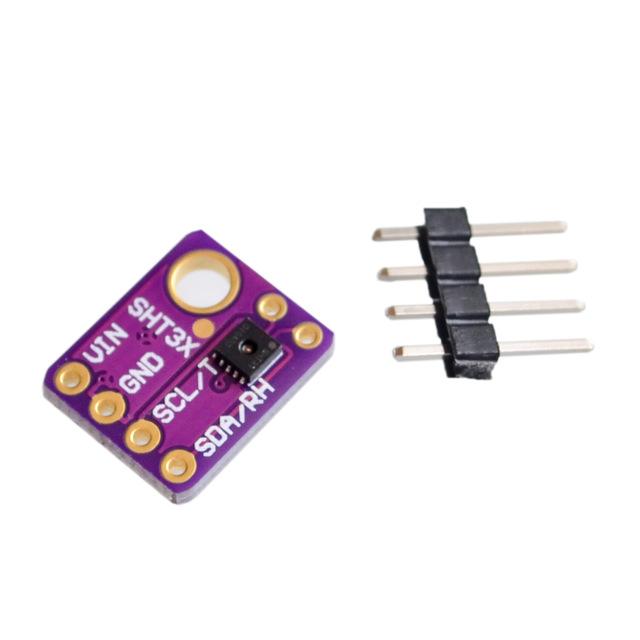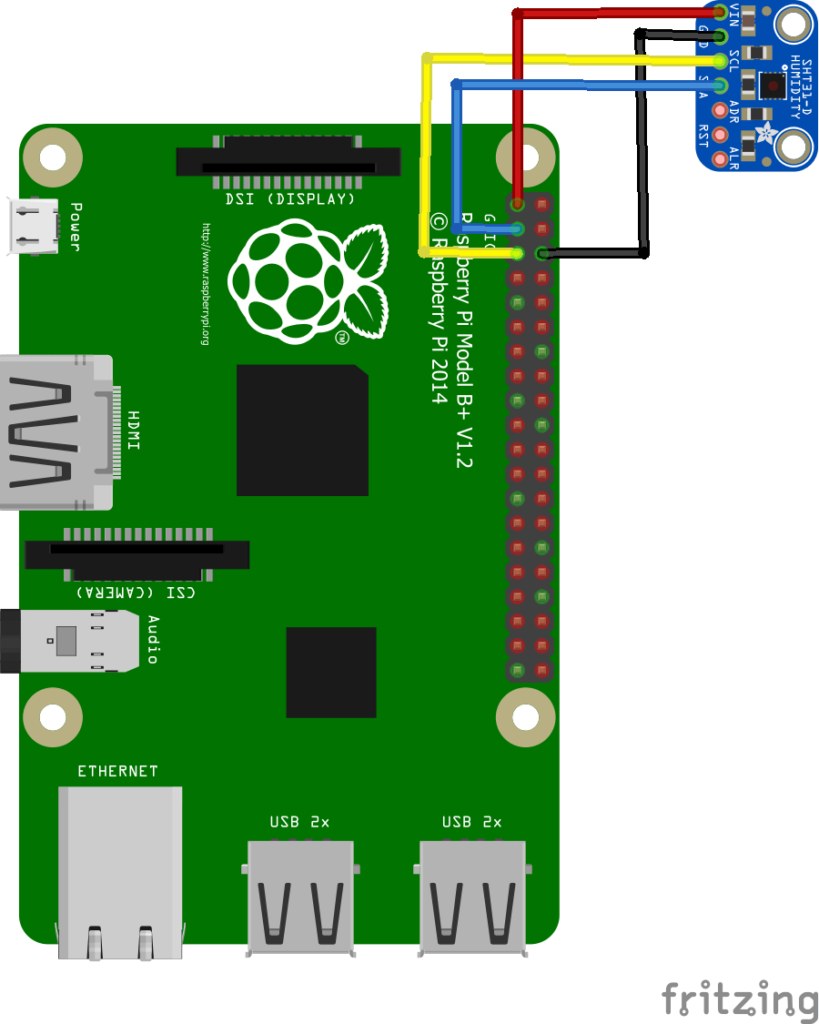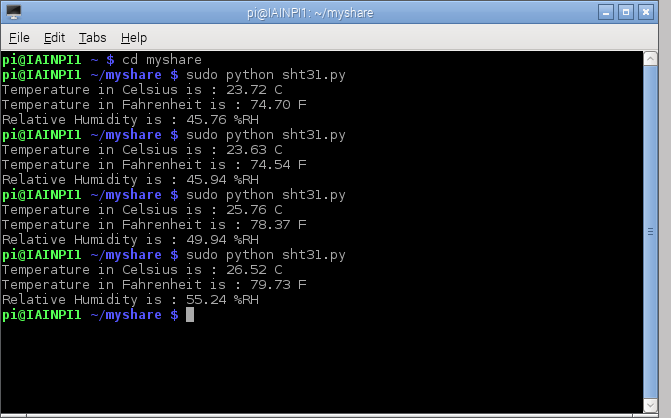SHT31 is the next generation of Sensirion’s temperature and humidity sensors. It builds on a new CMOSens® sensor chip that is at the heart of Sensirion’s new humidity and temperature platform.
The SHT3x-DIS has increased intelligence, reliability and improved accuracy specifications compared to its predecessor. Its functionality includes enhanced signal processing, two distinctive and user selectable I2C addresses and communication speeds of up to 1 MHz. The DFN package has a footprint of 2.5 x 2.5 mm2 while keeping a height of 0.9 mm.
This allows for integration of the SHT3x-DIS into a great variety of applications.
Features
Fully calibrated, linearized, and temperature compensated digital output
Wide supply voltage range, from 2.4 V to 5.5 V
I2C Interface with communication speeds up to 1 MHz and two user selectable addresses
I bought the following module
If you’re using an Raspberry Pi simply connect the VIN pin to the 3v3 voltage pin, GND to ground, SCL1 (D5) to I2C Clock (Analog 5) and SDA1 (D3) to I2C Data (Analog 4).
Here is a layout drawn up in fritzing to illustrate this
Layout
Code
Save the following as sht31
[codesyntax lang=”python”]
import smbus import time # Get I2C bus bus = smbus.SMBus(1) # SHT31 address, 0x44(68) bus.write_i2c_block_data(0x44, 0x2C, [0x06]) time.sleep(0.5) # SHT31 address, 0x44(68) # Read data back from 0x00(00), 6 bytes # Temp MSB, Temp LSB, Temp CRC, Humididty MSB, Humidity LSB, Humidity CRC data = bus.read_i2c_block_data(0x44, 0x00, 6) # Convert the data temp = data[0] * 256 + data[1] cTemp = -45 + (175 * temp / 65535.0) fTemp = -49 + (315 * temp / 65535.0) humidity = 100 * (data[3] * 256 + data[4]) / 65535.0 # Output data to screen print "Temperature in Celsius is : %.2f C" %cTemp print "Temperature in Fahrenheit is : %.2f F" %fTemp print "Relative Humidity is : %.2f %%RH" %humidity
[/codesyntax]
testing
Run the python script – sudo python sht31.py
Link
1PCS/LOT SHT31 Temperature & SHT31-D Humidity Sensor module Breakout Weather for Arduino





